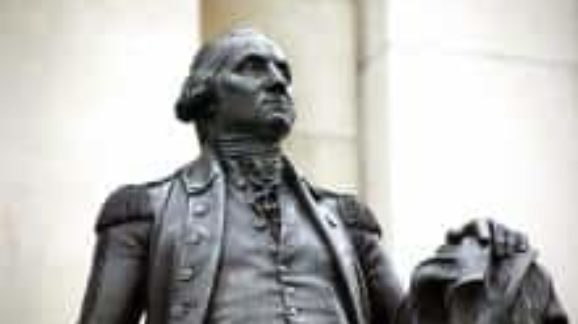When George Washington Met Moses
In 1790, the United States of America was a new nation, but Moses Seixas was already living what would come to be called the American Dream. The son of Sephardic Jews who had migrated from Lisbon, Portugal, to Newport, R.I., Seixas took advantage of the opportunities his state and nation offered to civic-minded entrepreneurs of all faiths. He would become a leading town merchant and cofounder of the Bank of Rhode Island. He would also become the warden — or lay leader — of Congregation Jeshuat Israel, which had built a beautiful synagogue with a domed ceiling and Greek-style ionic columns at the center of town. (The synagogue, later called the Touro Synagogue, still stands at the center of Newport’s downtown.)
Though Seixas and other Jews of Newport had achieved prosperity, they were worried that their freedom to worship and participate in civic life wouldn’t last. Given what had happened to Jews throughout the old world, they had reason to worry. Jews had been kicked out of various European countries through the centuries, “expelled from England as early as 1290, forced to leave Spain in 1492, and kicked out of Portugal four years later.”
But Moses Seixas and many Jews in the new United States, numbering only around 2,000 in a total U.S. population of 2.5 million when the American Revolution began, found hope in the words of George Washington and the Founding Fathers on religious liberty and equality under the law. And when he learned that Washington would be visiting Newport — as part of a visit to Rhode Island in celebration of its becoming the final original state to ratify the U.S. Constitution — Seixas saw it as an opportunity to ask Washington to confirm explicitly that the Founders’ promises applied to Jews.
Soon after Washington arrived in Newport in August 1790, Seixas presented him with a letter from the members of Congregation Jeshuat Israel. Accounts differ as to how Seixas delivered the letter. An entry on Founders Online, a digital repository of letters maintained by the National Archives and University of Virginia, speculates that “Seixas probably presented it to GW on the morning of 18 Aug. 1790 when the town and Christian clergy of Newport also delivered addresses to the president.” Yet articles in the authoritative Mount Vernon Digital Encyclopedia say Washington actually visited the synagogue during that trip.
What is undisputed, however, are the powerful messages of religious freedom and equality under the law from the Jewish congregation’s letter and Washington’s swift response. The letter dated August 17 states: “Deprived as we heretofore have been of the invaluable rights of free Citizens, we now (with a deep sense of gratitude to the Almighty disposer of all events) behold a Government, erected by the Majesty of the People — a Government, which to bigotry gives no sanction, to persecution no assistance — but generously affording to All liberty of conscience, and immunities of Citizenship.” The letter implicitly asks Washington to affirm that the views of the promise of the new nation held by Seixas and the congregation were correct.
Washington did indeed affirm this in a letter replying to the congregation dated one day later. And in that letter, Washington promised even more than the religious liberties the Jewish congregation had asked for: that Jews would be full citizens of the new republic. Echoing some of Seixas’s phrasing, Washington replied, “For happily the Government of the United States . . . gives to bigotry no sanction, to persecution no assistance.” Washington was quick to add, though, that the U.S. Constitution goes beyond mere religious toleration and explicitly grants religious freedom and full citizenship to people of every creed. “It is now no more that toleration is spoken of, as if it was by the indulgence of one class of people, that another enjoyed the exercise of their inherent natural rights,” he wrote in the letter to the synagogue.
Read the full article at National Review.
